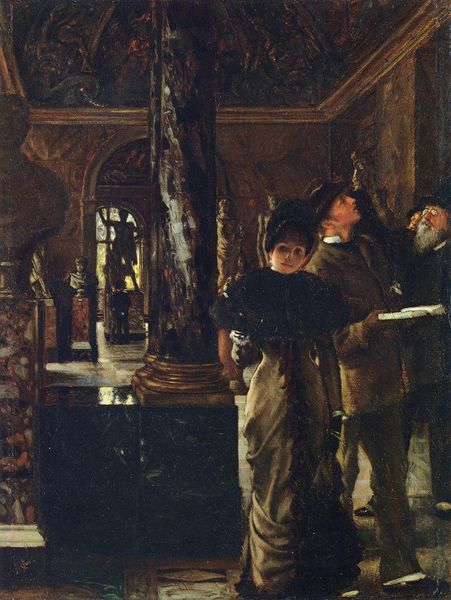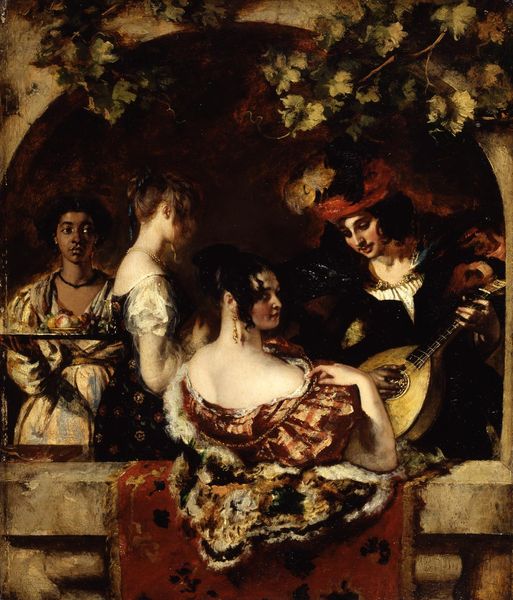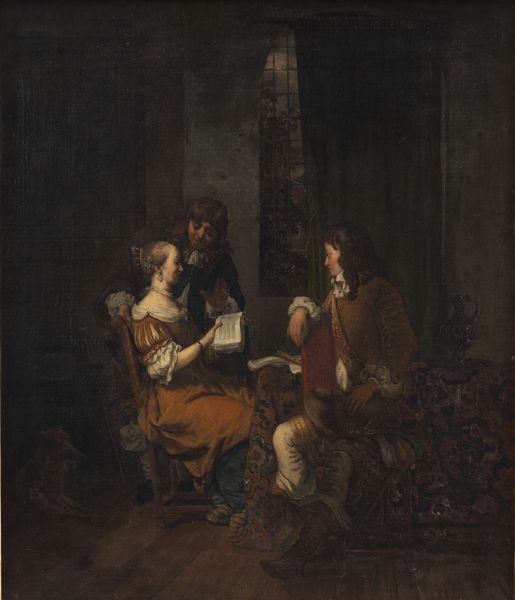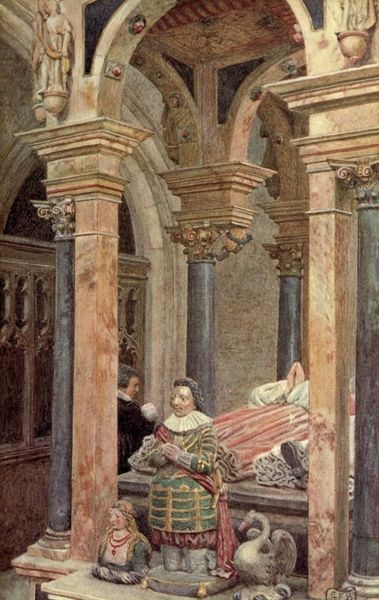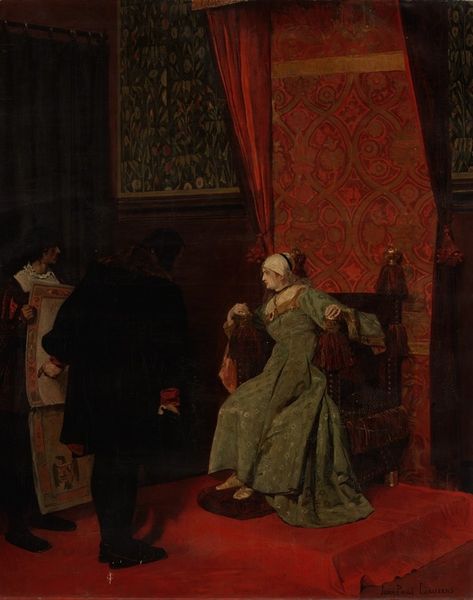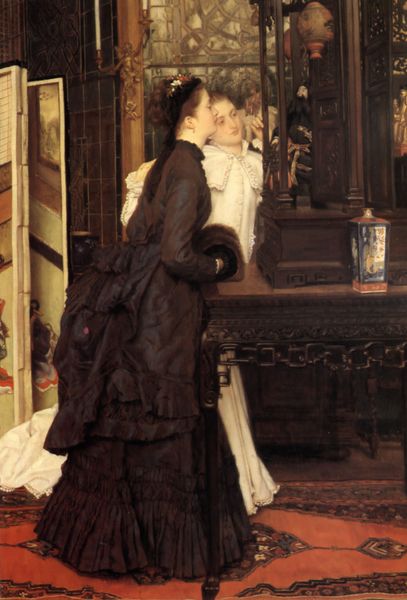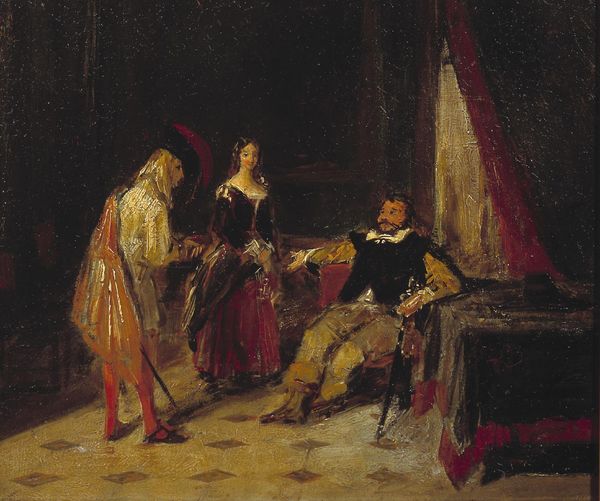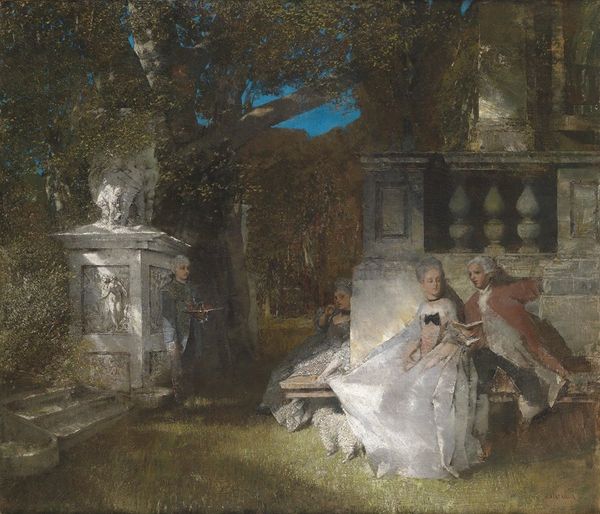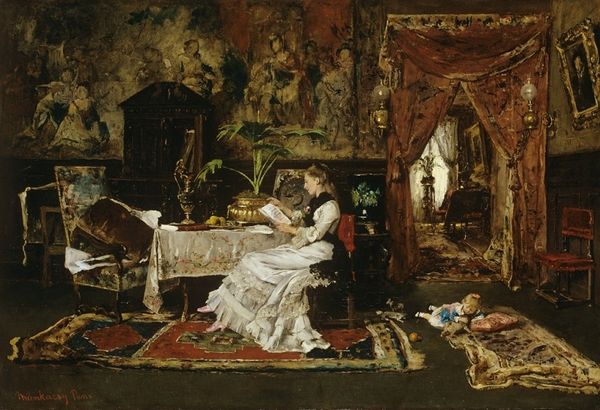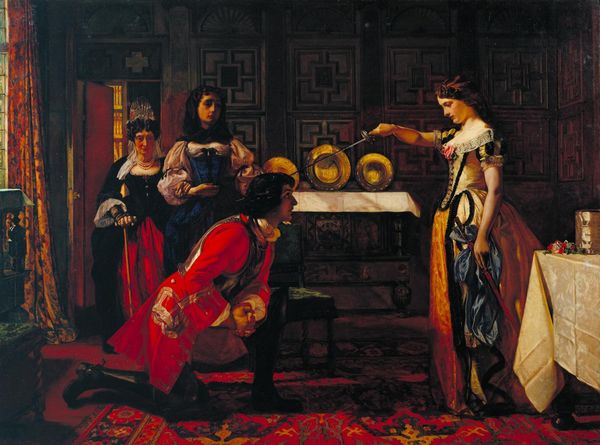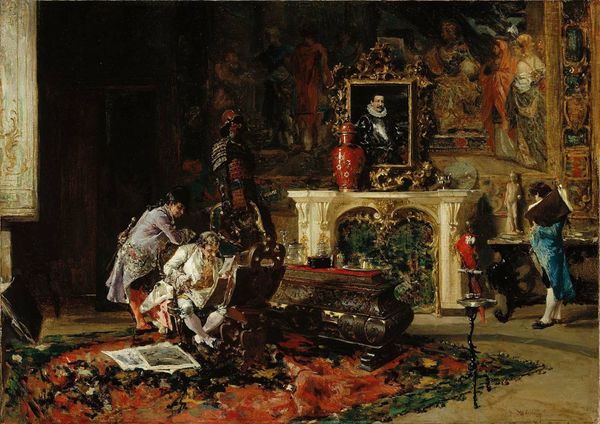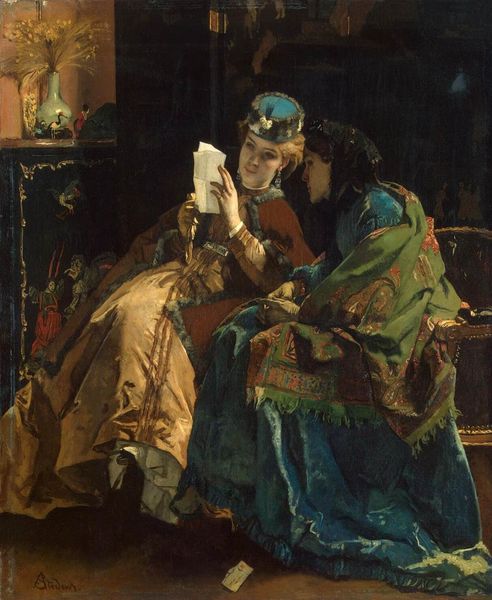
painting, oil-paint
#
portrait
#
narrative-art
#
painting
#
oil-paint
#
landscape
#
figuration
#
romanticism
#
genre-painting
#
academic-art
Dimensions: 35.5 x 50.8 cm
Copyright: Public domain
Curator: Ah, this is "The Rendez-Vous," attributed to James Tissot, painted with oils. I find its depiction of a brief encounter incredibly poignant. Editor: Poignant, yes, but also heavy. The colors are so saturated, and the figures appear trapped within this claustrophobic garden setting. Curator: Well, let's consider the context. Tissot was a painter of modern life. These types of scenes often provided glimpses into the social dynamics of the period, particularly around courtship. The encounter between the man and woman is staged within this private garden, offering an element of the clandestine. Editor: I see what you mean, but this garden reads to me less as romantic and more as restrictive. Her downward gaze, his firm grasp, and the somber clothing… it suggests societal constraints more than genuine affection. There’s an almost prison-like quality in the dense foliage pressing in around them. Are they meeting or escaping? Curator: That’s a very compelling reading. Think about the Academic style, the artistic conventions that dictated certain forms of representation at the time. The painting is undeniably beautiful and rendered with great detail, yet also perpetuates narratives about social status and gender roles that, even then, were subjects of contestation. Editor: Exactly! We can't divorce this from the politics of imagery. Is Tissot offering a critique, or merely reflecting the expectations placed upon women in particular? That hesitant arm on his wrist speaks volumes. Curator: It really emphasizes the psychological complexity. The untidiness on the periphery – discarded items – contribute to a feeling of interrupted domesticity, as if life’s messy realities cannot be neatly contained. This lends the scene its raw, vulnerable edge. Editor: A reminder that behind the gilded facades, life continues. Tissot hints that women exist beyond the boundaries set out by society. Curator: These nuanced portrayals of interaction allow a peek into lives both opulent and yet bound. The viewer sees what Tissot intended: life revealed as complex layers, often with conflicting expectations. Editor: Yes, an entanglement of personal desires against societal boundaries, emotions against duties. Perhaps there is more truth in this garden tableau than Tissot even realized.
Comments
No comments
Be the first to comment and join the conversation on the ultimate creative platform.
